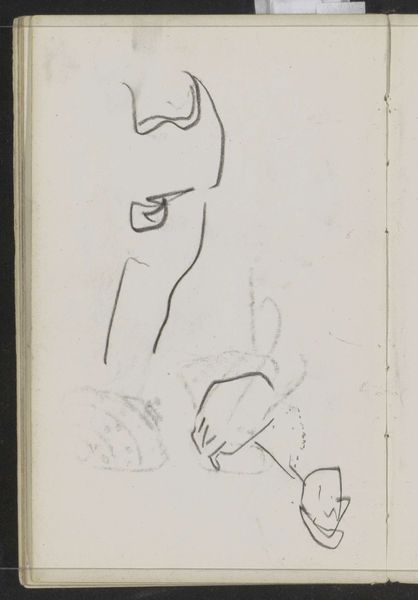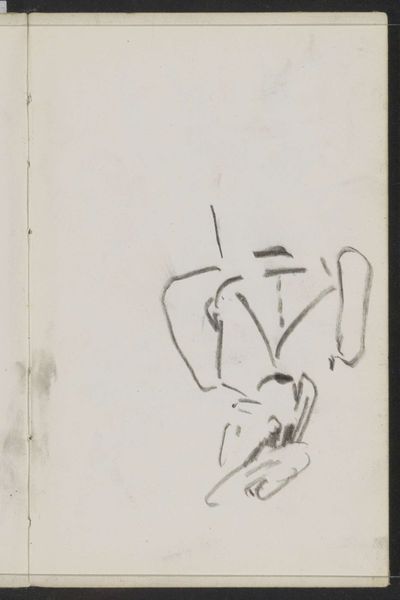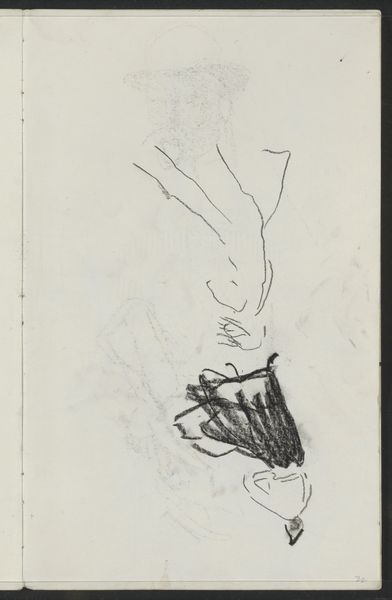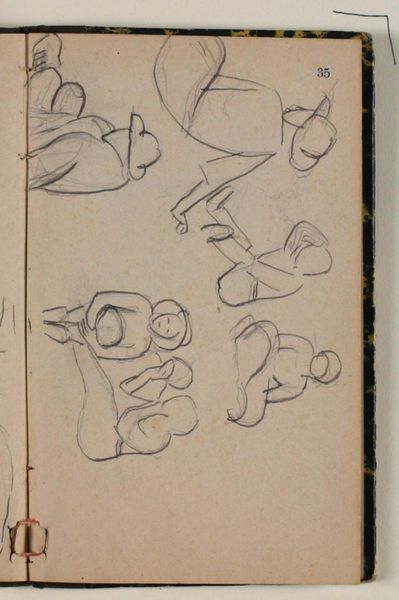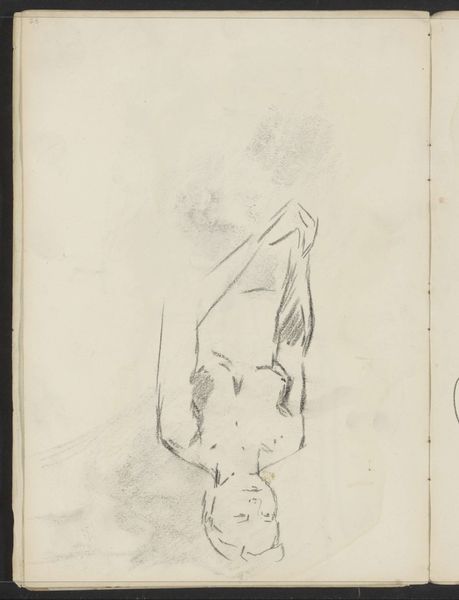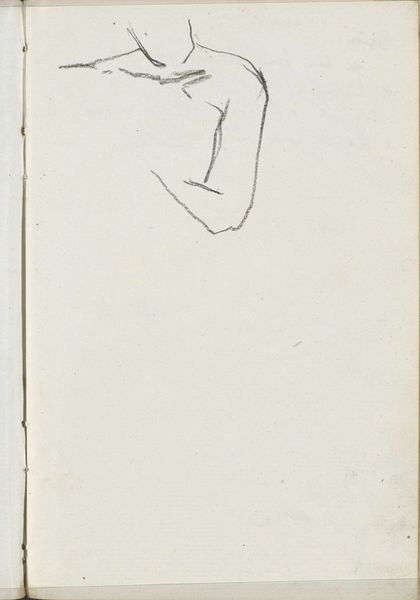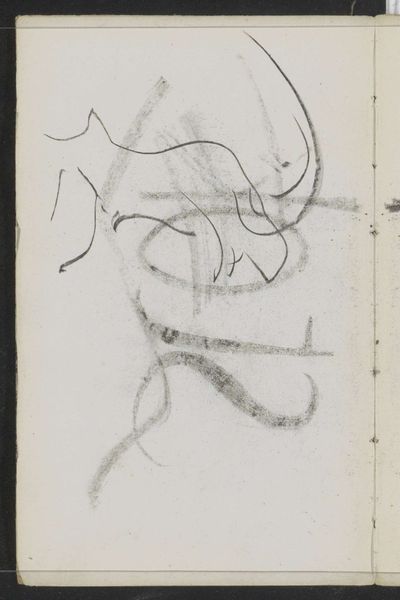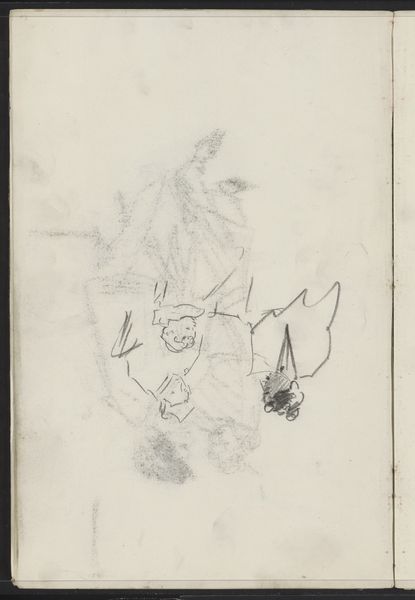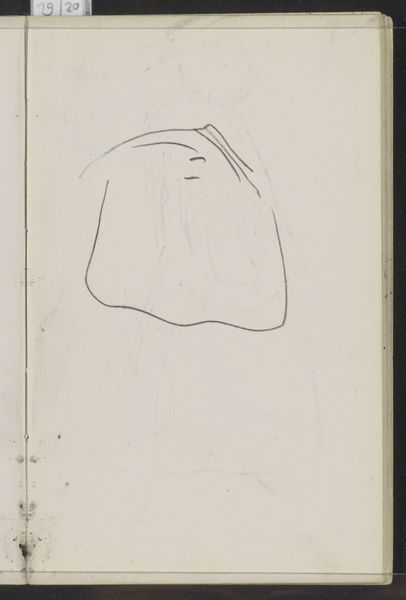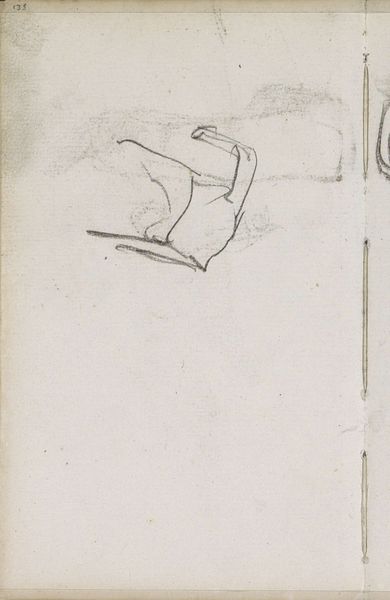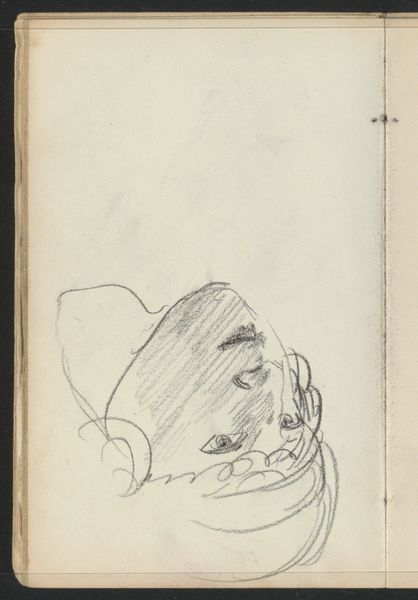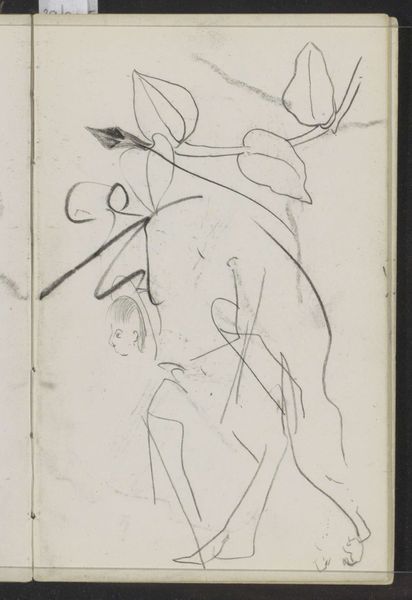
drawing, paper, pencil, graphite
#
drawing
#
paper
#
pencil
#
abstraction
#
line
#
graphite
Copyright: Rijks Museum: Open Domain
Editor: So, this is “Studies” by Carel Adolph Lion Cachet, created sometime between 1874 and 1945. It's a pencil and graphite drawing on paper, currently housed at the Rijksmuseum. I'm immediately struck by the sketchiness of it, the very raw and unfinished quality of the lines. It’s… evocative, but hard to pin down. What do you see here? Curator: I observe a sophisticated engagement with line itself, wouldn't you agree? Notice how Cachet employs varying degrees of pressure to achieve different tonal values. The lightness of the figure contrasts beautifully with the assertive darkness defining the forms below. Consider, also, how these lines intersect, suggesting depth despite the overall flatness of the picture plane. Editor: Yes, I can see that now, especially the different pressures. But I'm still not sure *what* I'm looking at. Are they supposed to be recognizable objects? Curator: Recognition is, perhaps, secondary to the aesthetic experience. Is the success of this piece contingent on accurate depiction? Or does its power reside in the relationship between line, form, and negative space? How does this arrangement of formal elements stimulate a reaction in the viewer? Editor: So, it’s more about the shapes and how they interact with each other than about what they actually *are*? Curator: Precisely. Observe, if you will, the strategic placement of the forms on the page. Notice the balance – or perhaps the deliberate *imbalance* – created through the artist’s arrangement. How does the composition guide the viewer's eye across the surface? What effect does this have? Editor: Okay, now I see it. The sort of floating quality they have, and the varying darkness, that gives the drawing an interesting kind of tension. It's like, it's unfinished, but that’s the point? Curator: Indeed. Perhaps Cachet seeks to explore the very essence of form through the economy of line, rejecting the need for representational completeness. And through it, reveals more. Editor: I guess I was too focused on figuring out what everything *was* that I missed how everything was working together. I was definitely missing the forest for the trees there! Curator: An easy trap to fall into. By allowing ourselves to appreciate purely formal relationships, we are freed from the constraints of literal interpretation and arrive at a richer aesthetic appreciation.
Comments
No comments
Be the first to comment and join the conversation on the ultimate creative platform.
